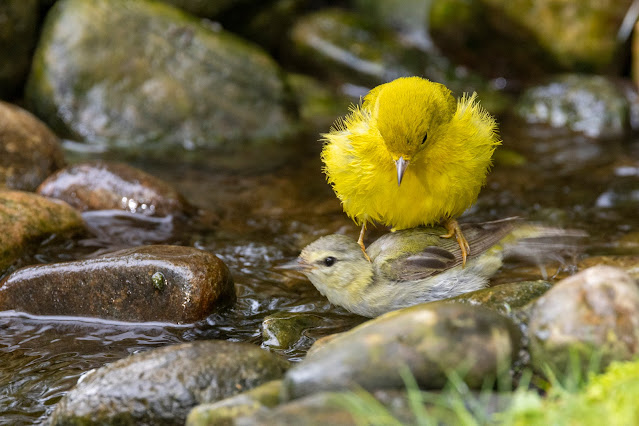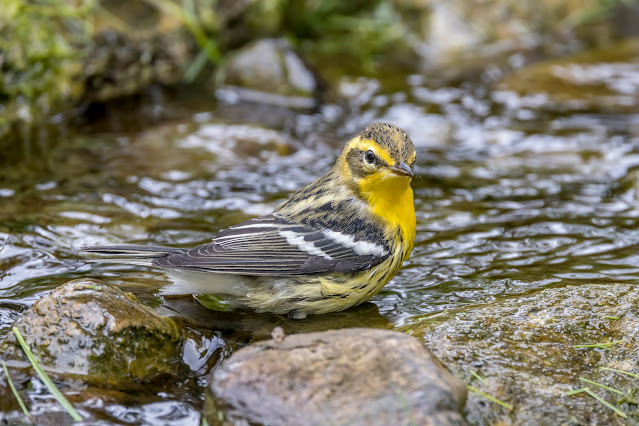Not your stepping stone.

So the Tennessee (and The Monkees) say. The yellow seemed to be very deliberate in landing on the Tennessee as if to say, get out of my pond. Rondeau Provincial Park, Aug 12, 2023. Leiothlypis peregrina- Tennessee warbler Setophaga petechia - Yellow warbler.








